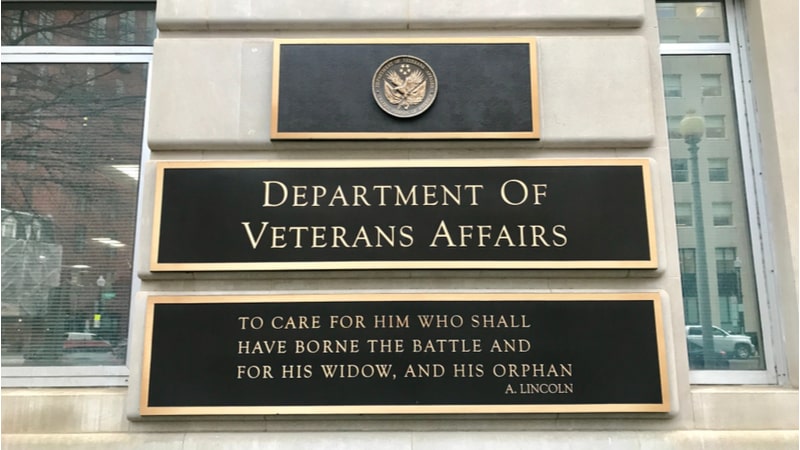
As the Department of Veterans Affairs (VA) continues to see problems arise with its Electronic Health Records Modernization (EHRM) program, members of the House Committee on Veterans’ Affairs implored VA to pause any further deployments of the EHRM system until issues are addressed at the existing deployment sites.
At a Subcommittee on Technology Modernization hearing on April 26, lawmakers agreed that the agency must address the existing concerns with the EHRM system – and the Cerner Millennium system it runs on – such as pharmacy and prescription errors, unannounced shutdowns, and a growing backlog of tickets, among others.
VA launched the first EHRM deployment at Mann-Grandstaff VA Medical Center in Spokane, Wash., in October 2020, then deployed the program at the Jonathan M. Wainwright Memorial VA Medical Center in Walla Walla, Wash., on March 26, 2022. In just three days, on April 30, the agency plans to deploy the system at the VA Central Ohio Healthcare System in Columbus, Ohio.
“Given the issues that we’re seeing in Spokane and Walla Walla, I think the risks exceed the benefits and have seen no indication that the system is ready for the challenges at those facilities,” Chairman Frank Mrvan, D-Ind., said. “These issues have to be fixed first, and the concerns of the facilities currently using the system need to be addressed.”
“Until these issues are resolved, the committee cannot support VA going live with Cerner at larger, more complex facilities,” he added.
Too Soon to Assess Walla Walla
While the issues at Spokane have long been a topic of concern due to multiple VA Office of the Inspector General’s (OIG) reports, the Walla Walla deployment is still quite new. Dr. Terry Adirim, program executive director of the EHRM Integration Office at VA, noted that VA believes the Walla Walla deployment “was a success.”
However, Laura Prietula, the deputy CIO for the EHRM program, noted that Spokane and Walla Walla experienced an outage with the system both during the hearing and the day before.
David Case, the deputy inspector general at the VA’s OIG, warned that the OIG did not hear concerns from Mann-Grandstaff until about two to three months after the system go-live, “especially as additional support started to pull back.”
Case said over the next few months, the OIG will get a better idea of whether or not Walla Walla runs into the same problems as Spokane.
“We’re not going to be able to assess it until we’ve seen more history at Walla Walla and the system is in place for a period of time,” Case said. “An exact period I can’t tell you, but it’s certainly another two to three months, given the history we saw at Mann-Grandstaff.”
Prescription Issue Could Take Years to Resolve
One unresolved issue that remains a major concern to lawmakers is the prescription issue. The EHRM system requires physicians to manually reenter prescriptions after they expire, causing medications to drop out of the EHRM system – delaying patient care, and increasing patient risk.
For example, lawmakers noted one veteran’s heart medication fell off his record, causing the veteran to run out of medication. The veteran needed to be hospitalized after a cardiac episode.
To address this pressing issue, Adirim said it will require changes to the system’s software, which Cerner has told VA could take anywhere from 13 to 36 months.
“Thirteen to 36 months – it’s a long timeline. VA has to evaluate whether that’s a sufficient timeline that they can live with in terms of future deployments,” Case said. “If it’s critical to deployments, then maybe there has to be other solutions found. But at this point, they haven’t even started on the process yet.”
VA said it was not aware of any other solutions that could deliver the same technology as Cerner and does not have any current plans to consider other options.
With VA now four years into a 10-year contract, lawmakers are frustrated, especially with a timeline of up to three years to resolve the prescription issue.
“This is creating more disruption and more patient safety risks than any other issue,” Ranking Member Matt Rosendale, R-Mont., said of the prescription issue. “There should be no more go-lives or additional funding until every single one of these [problems] has a fix.”
Next Steps for EHRM
Both Adirim and Patrick Sargent, senior vice president and general manager at Cerner Government Services, remain confident that the VA’s EHRM system is on the right track.
“We are actively monitoring system usage trends to gain insight into how adoption of the new technology is progressing and to identify areas where there may be concerns,” Adirim said.
“Although there have been challenges along the way – especially for Mann-Grandstaff as our first site, and there is more work to do, we acknowledge that – I am confident the program is on track to be successful,” Adirim added.
Sargent – a veteran himself – also gave his commitment to the committee that Cerner will “work to have zero preventable harm” and “work closely with the VA” to achieve that.
Despite VA and Cerner’s assurance, members of the committee agreed they do not “feel comfortable” allowing the system to be used at any other VA facility until the existing issues are addressed.
Mrvan said the committee will be sending a bipartisan letter to the VA “shortly” to express “how seriously we’re taking this.”
“This issue is not partisan. Everyone on this committee cares about the lives and safety of veterans,” Mrvan said. “The risks to veterans’ lives is too great.”
“We have great concern for going forward for larger systems in which would mean statistically greater risk. So ultimately, as we go forward, please hear those concerns,” Mrvan told the witnesses.
